
Orange Wine 101: A Guide to the Popular Style and Bottles to Explore
The trendiest new wine style making its way into your glass—explained.
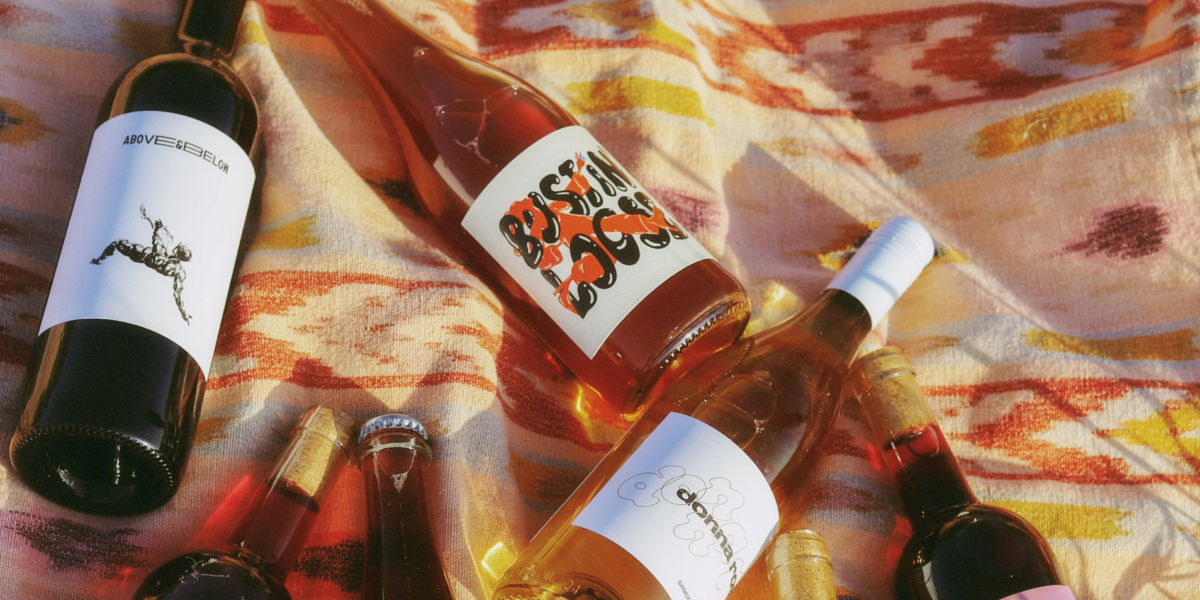
Orange wine, sometimes referred to as skin contact or amber wine, is easily one of the most popular styles of natural wine on the market. But with increasing popularity comes an increase in styles. If you’re like me, this overload can be overwhelming. For those of us who are just getting into natural wine, we’re looking for simple answers to basic questions—like, what even is orange wine?
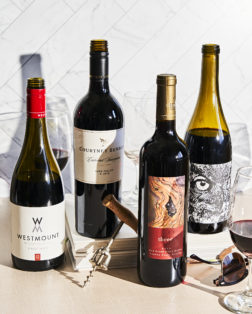
The Sunset Wine Club
Wine Club members receive:
- 6 featured wines, shipped every 3 months
- Tasting notes and suggested pairings for Sunset recipes
- The first look at rare gems in the Sunset wine shop
- Exclusive member events
I’ve learned that to start defining what orange wine is, we first need to define what the term skin contact means. “Wine gets all of its color from the skin. If you seep the skins in the wine while it’s fermenting, it extracts the color from the skin,” says Victor Martinez of Ardor Natural Wines in Portland, Oregon.
While red wine appears that color because it’s been macerated with the skins of red grapes for longer periods, orange wine is made with white grapes “with the skins still in contact,” Martinez adds. “It also extracts tannins from the skin, which gives it the structure of red wine.”
This process of skin contact imparts a variety of shades and hues that make up the broad spectrum of what orange wine is and can be.
To understand why the beverage is appearing on bar menus, in grocery stores, and at all of the trendiest restaurants in the West, I chatted with some shopkeeps to get answers to the key questions: Why is it so popular? Where does it come from? And most importantly, what bottles should I try and where can I get them?!
Keep reading for the answers to all of these questions plus more history, facts, and intel about all things orange wine.
What Is Orange Wine?
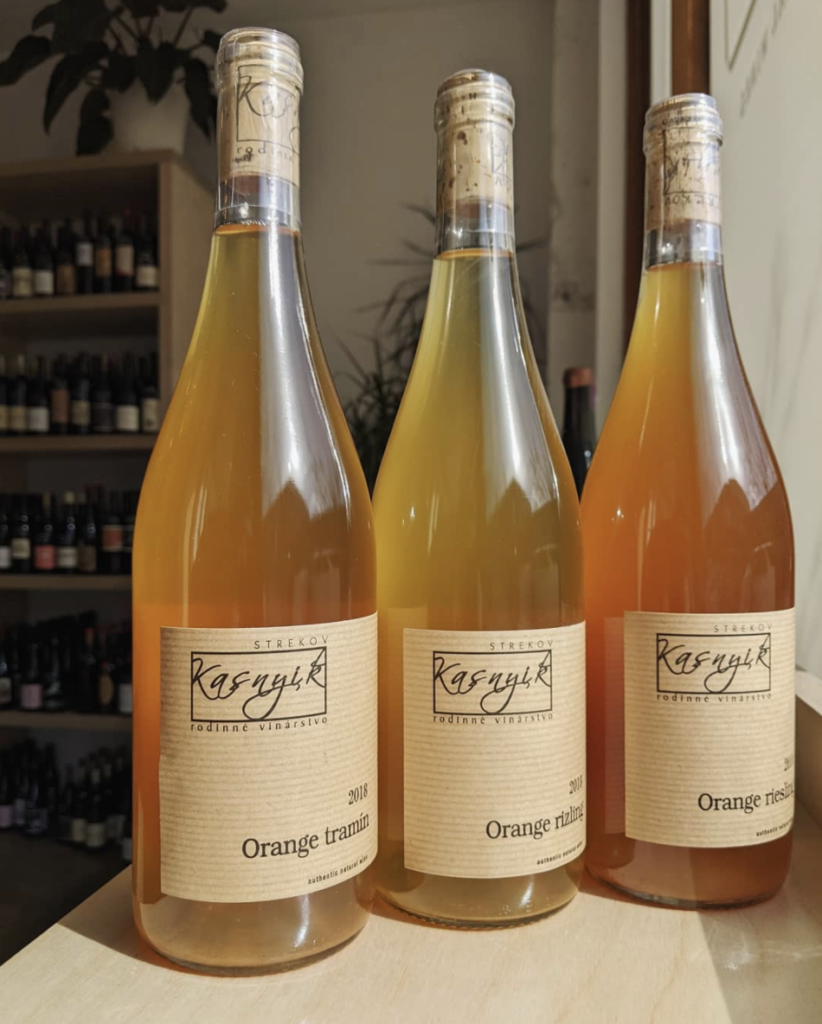
Ardor Natural Wine
Orange wine is a pretty umbrella term for wines that are made with the skins still on the grapes, leaving them with a hue that appears orange or amber. Owner Molly Ringe of Molly’s Bottle Shop defines the style for us a little further:
“Rosé is red grapes with small skin contact. White wine is made with no skin contact; they crush it and then take the skins away to make the wine. Orange wine is the same as Rosé but with white grapes. You take them and crush them with the skins on and let them stay with the juice, and now you have orange wine.”
There is no set amount of time that the grapes must come in to contact with the skins, which is why some bottles that fall into the orange category actually carry more of a pale yellow shade like white wine, or at times a more pink shade similar to a Rosé.
While many people distinguish orange wines due to the skin contact, that shouldn’t be the only signifier. “I don’t like the term skin contact to describe orange wine because orange wines aren’t the only wines made with skin contact,” Martinez says. “Any wine with color is a skin contact wine, any wine without color is not a skin contact wine.” So, while you might see skin contact on a wine list as its own category, it doesn’t mean all of the wines are orange. They also might be Rosé or red wines, depending on how long the skin remained in contact.
“There’s also a misconception that because it is orange it’s natural,” Ringe explains. “You can make orange wine with conventionally manipulated wines and grapes.”
The process of keeping the skins intact is not what makes orange wine natural. What makes it natural are the farming practices, the treatment of the grapes (whether or not there are pesticides or chemicals added during the maturing process), as well as if there are additives used during fermentation.
So, don’t be fooled! “In Mexico, there is a big movement toward natural wine,” Ringe tells me. “They call their wines amber because they don’t want to be associated with the California natural wine movement of [conventional] orange winemakers and people trying to slide in on the coattails of orange wine’s popularity.”
To clear up one more misconception: Orange wine is not made with oranges. “We call it orange wine because that’s how people commonly know it. If you think about wine in a colloquial way, to distinguish wine we talk about the color of it like red or white,” Martinez tells me. “That’s an unfortunate happenstance of how the English language works.”
Orange Wine Is a Lot Older Than You Might Think
At most restaurants I frequent in Los Angeles, I notice at least one wine labeled orange or skin contact on the menu, and Oregon, Washington, and other parts of California are all catching on. This is in part due to a growing millennial interest in natural wine.
“Millennials aren’t bound by tradition so they’re super open to trying new things different from what their parents like,” Martinez says. “Orange is fun, interesting, not stodgy, you don’t have to spend hundreds of dollars on a bottle—and we don’t talk about it like that. We drink this stuff because we like it, not because it has to taste a certain way.”
But while orange wine is gaining recent popularity in the West, it actually has a long history. Winemakers in the country of Georgia started making the style “8,000 years ago,” Ringe says. “They did it as a method of preservation. They didn’t have all these preservatives and learned that if you let the juice sit with the skins, you ended up with something that would last longer. In Georgia, they call that amber wine.”
So why is orange wine only becoming more popular in the West now? It may be due to a constellation of factors, such as the lack of additives, which in conventional wines can leave consumers with headaches and other side effects, the broad spectrum of flavors and tasting notes that can be imparted by natural fermentation and time, and the pleasant price point that leaves most bottles on the market at under $50.
Additionally, one of the best parts of natural wine is that there are no limits to what you can do in terms of flavor and creating unique blends and styles. Many orange winemakers combine multiple types of white grapes to create a single bottle of wine. A 2020 Island of Souls Skin-Contact White Blend from J. Brix, a natural winemaker based out of San Diego, combines three grape varieties: 45% Grenache Blanc, 45% Picpoul, and 10% Vermentino.
“A lot of orange winemakers aren’t bound by where they’re from or the environment they’re in because they’re trying to make the wines they want to make, with the grapes they want, instead of following strict guidelines,” Martinez says.
Is Your Orange Wine Natural?
With bottles claiming to be natural wines popping up on the market, and organic wine sections appearing in mainstream grocery stores like Trader Joe’s and Whole Foods, how can we weed through the fake and phony and find the real natural stuff?
First, do a little bit of research and chat up your natural wine store employees—trust me, they want to talk about it with you. “There are a lot of people out there who are selling wine as natural or are small producers, or working with reputable purveyors, and it’s just still not natural,” Ringe says. The misconception comes as a result of the varying definition of what natural wine is. Some producers allow small amounts of additives like sulfur while others value the practice of adding none at all. First, do a little bit of research and chat up your natural wine store employees—trust me, they want to talk about it with you. “There are a lot of people out there who are selling wine as natural or are small producers, or working with reputable purveyors, and it’s just still not natural,” Ringe says. The misconception comes as a result of the varying definition of what natural wine is. Some producers allow small amounts of additives like sulfur, while others value the practice of adding none at all. (If you want to dive deeper into the world of natural wine, check out my full guide here.)
If you don’t want to drink a bottle of orange wine that was fermented with who knows what kind of additives, Ringe says you should “talk to your shopkeep and ask them for two producers of natural wine that they love based on what you like.” Also, “get to know your regions, and worst-case—ask.”
Ringe suggests looking for orange and natural wines from counties including “Georgia, Slovenia, Bulgaria, Bosnia, and Catalonia,” which “tend to make natural wines because they didn’t have access to additives for a long time. As a wine-rich culture, they’ve been making it naturally as their only option and now they still do.”
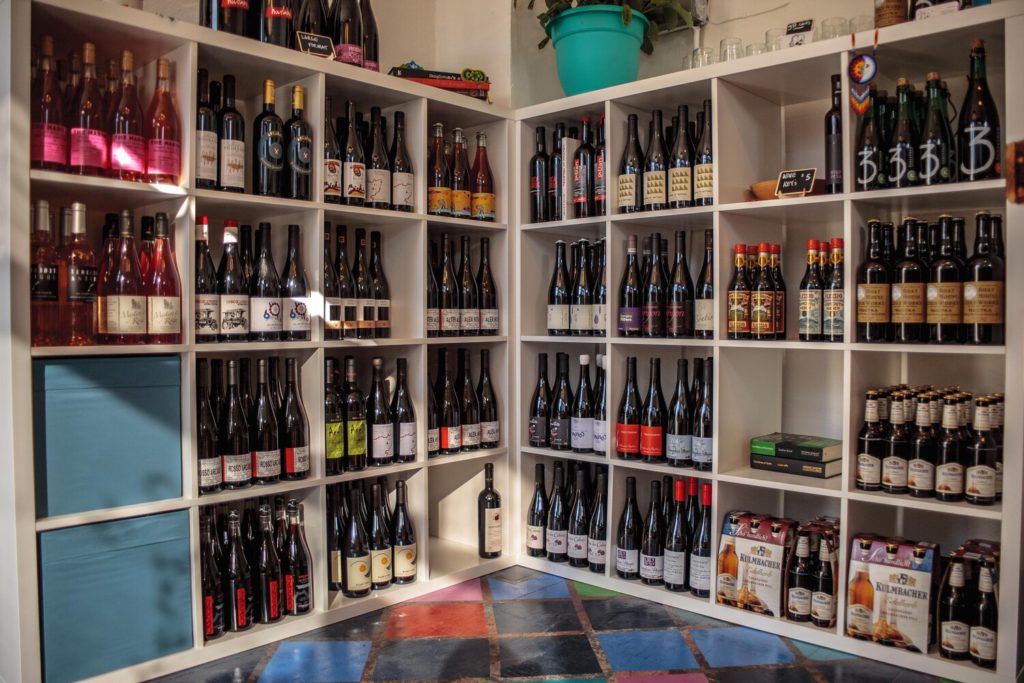
Molly’s Bottle Shop
Unfortunately, in the United States, we don’t require any information to be on a bottle of wine that tells consumers what’s gone into it. But a trick of the trade is to take advantage of what is required to be listed on the bottle.
“In this country, we don’t have to know who distributes it, but we have to list on the back of every wine bottle ‘imported by,’” Ringe says. “So, if you learn the names of a few importers who only import natural wines, you can ask the server or look at the bottle at a grocery store.”
After chatting with Ringe, I have a running list of trusted natural wine importers in the notes app on my phone to reference when I am in the mood for a glass of orange wine with friends. Here are five to take note of:
So, Which Bottles Should We Try?
Now that you know all about what orange wine is and is not, it’s time to taste. We’ve selected a handful of bottles to help you explore the range of what orange wine can be. Pick up a few and distinguish what you like about each and what doesn’t suit your fancy as well.
“We have this educational opportunity in the shop to say ‘Hey, let’s just try them,’ and we can find what people like because so many are very different and that’s the value of orange wine.”
“No matter what, get to know your wine shop,” Ringe adds. “Be honest with them, tell them what you did and didn’t like.”
With the openmindedness and eagerness to learn and explore new things in the West, we’re at an advantage to learn, taste, and explore natural wine at the height of its rise in popularity. So if you sip something and are not a fan, don’t write off orange wine altogether. Let your local shop or bartender know what you didn’t like about it, and try something at the other end of the spectrum.
Here are a few orange wines to whet your palate:
2020 Island of Souls Skin-Contact White Blend
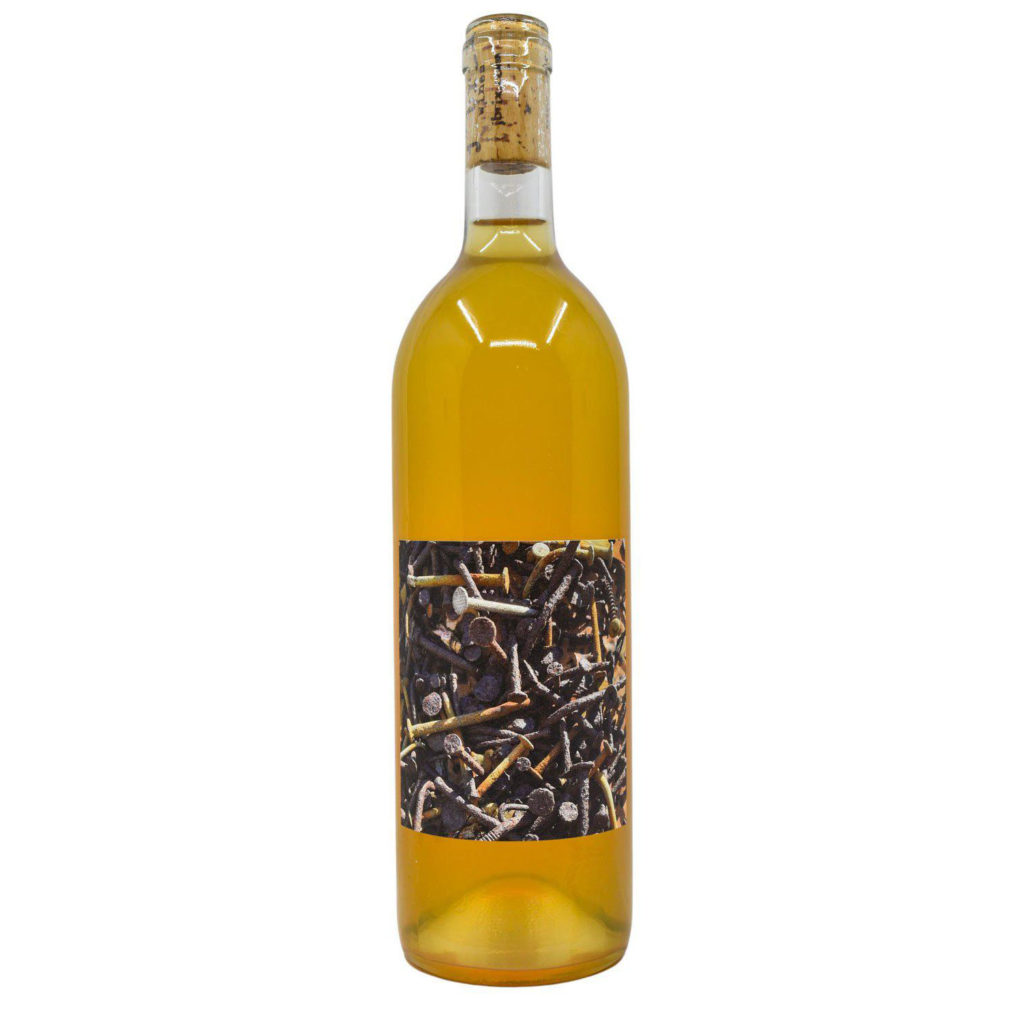
This orange blend keeps the skins in contact with the juice for 30 days, leaving it with a bright hue and mild tannins, perfect for a soft intro to orange wine. J Brix. used vines out of San Diego to put together this style that combines three types of white grapes. The winemaker produced just 145 cases total—so grab it while you can!
Oeno Skin Contact
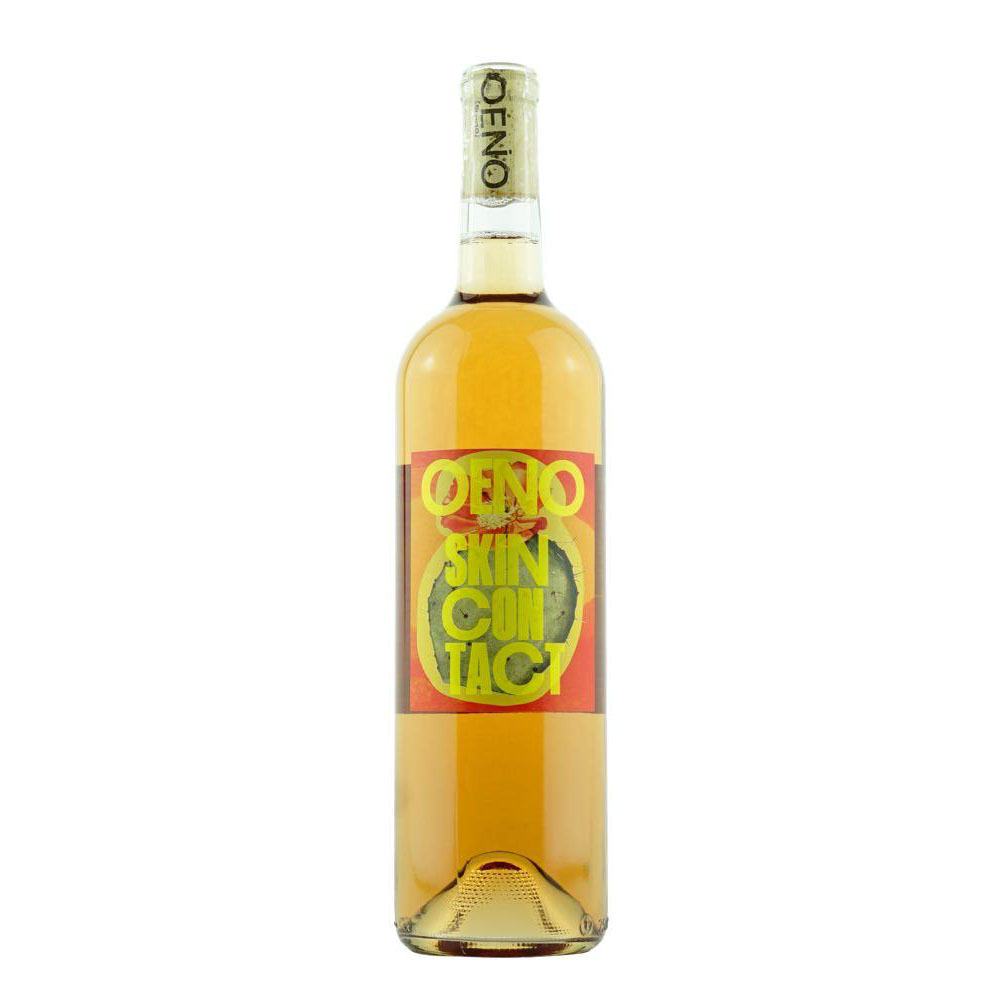
Oeno is owned by Amy Atwood, whose team help lend us a hand in suggesting a handful of bottles for our natural wine guide. This was one of the first orange wines I ever picked up at the store and took home; probably because it’s literally called “skin contact” and seemed like a safe bet. Now I pick it up whenever I’m looking to introduce friends to orange wine for the first time. The grapes for this bottle of orange come from the Russian River Valley in California.
Bichi La Gorda Yori White
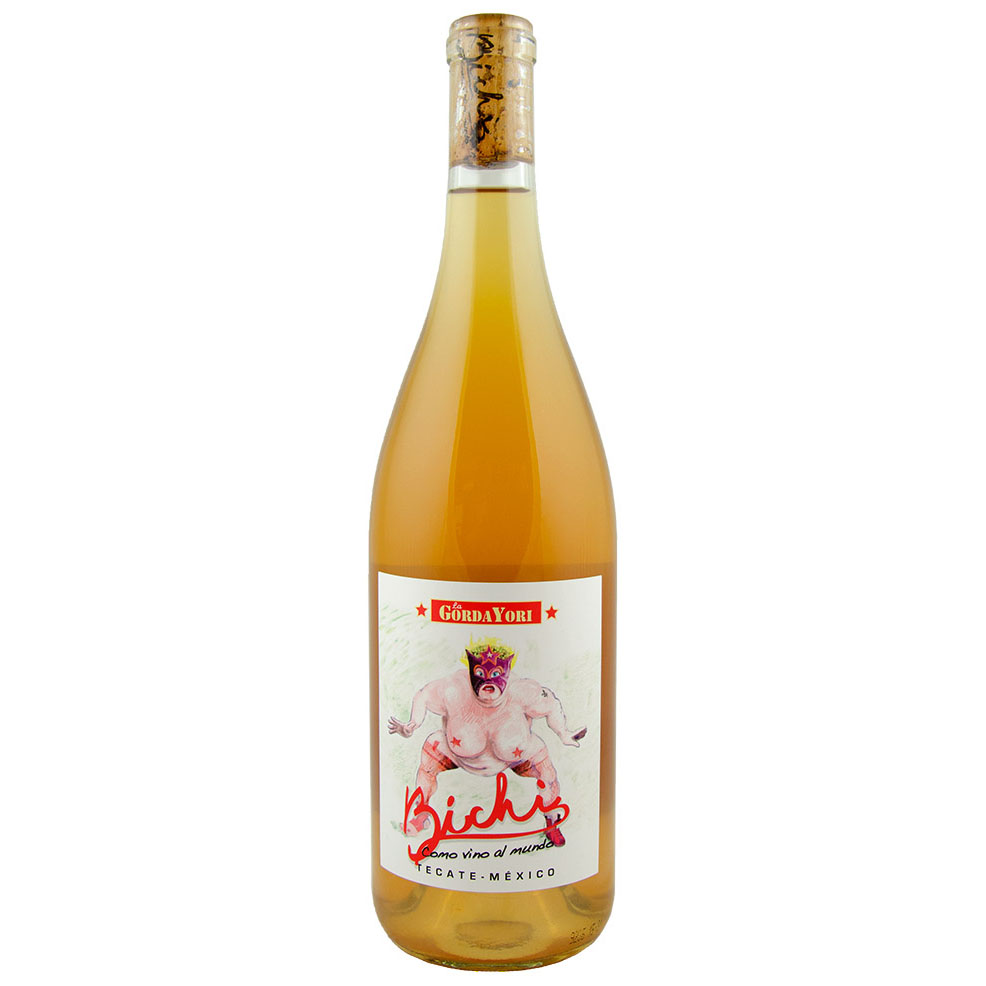
The team behind Bichi recently revived an abandoned vineyard in Tecate, Mexico, to create their unique blends of natural wines. This one in particular is fermented with 35 days of skin contact prior to pressing. It has a bit of funk to it but makes for an excellent pairing with a variety of different dishes, from fish and meat to a light dessert.
Meinklang Mulatschak Orange
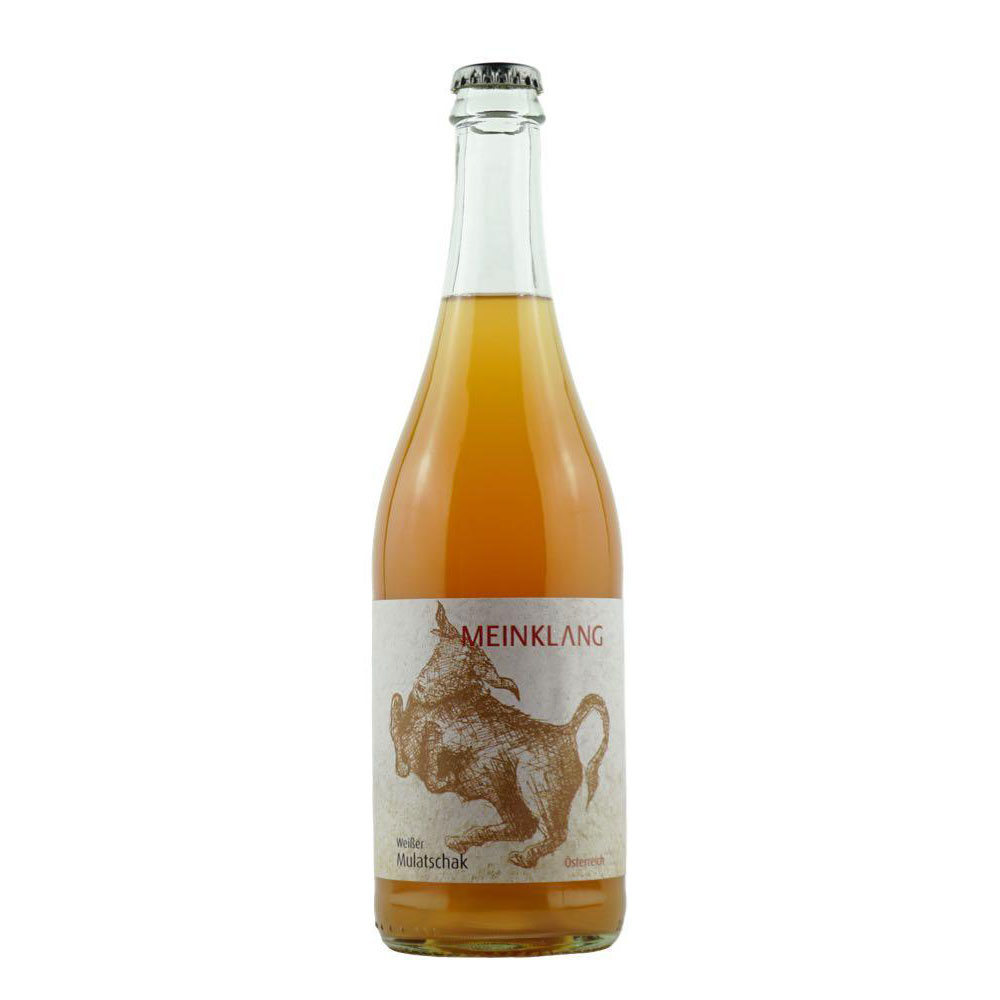
Meinklang is making natural wine the way it has been done since the beginning of time in Austria. Its vineyard is located on the same grounds as the farm that feeds those who operate it, allowing for natural nutrients from fertilizers produced by a herd of cows to help vines reach maturity. This super drinkable bottle of orange wine has a slight effervescence and lightness that will have you coming back for another glass.
Oro di Diamanti Vines Sum 2019
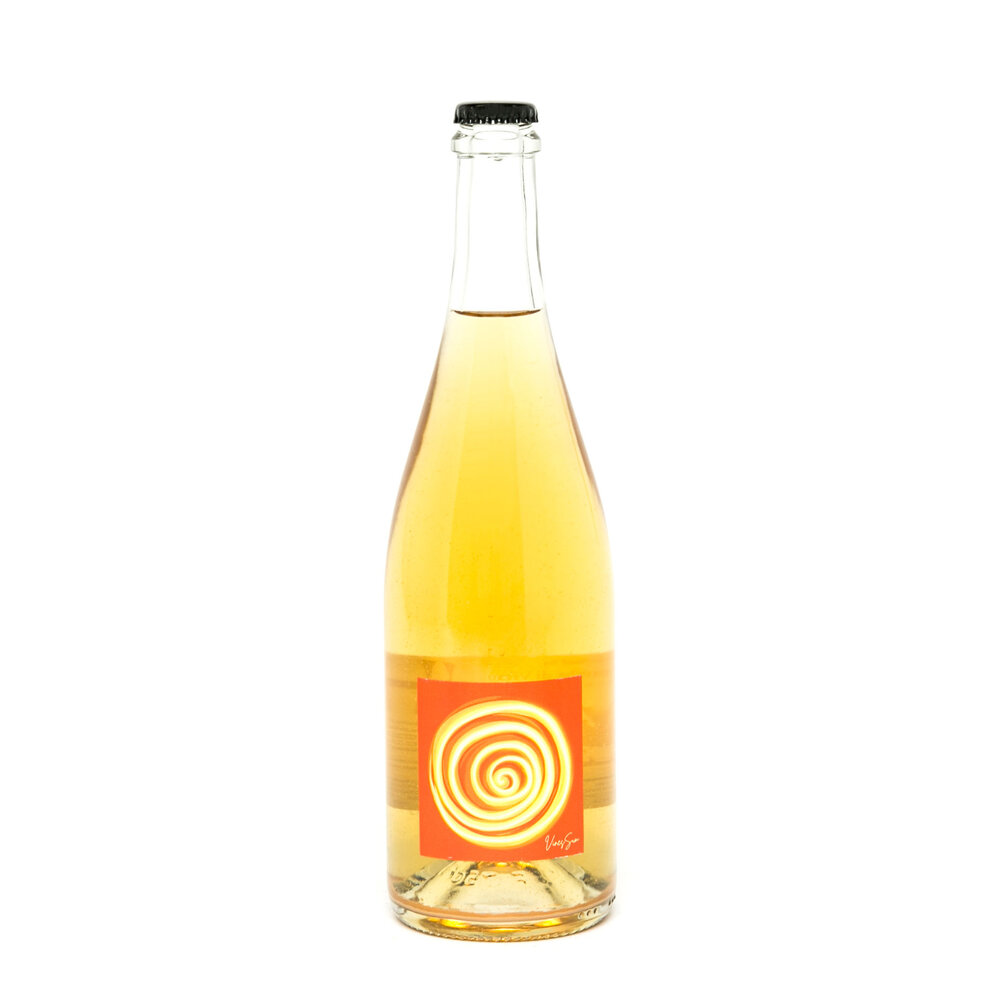
This bottle is made with grapes from Bologna, Emilia-Romagna, Italy, and takes advantage of Old World practices with old vines to match. It’s made using a technique that seals the wine bottle before fermentation is finished to allow for extra fermentation in the bottle, creating more effervescence upon opening. This orange wine is light and perfect for easy drinking whenever you need a big glass of something in your hand.
Abbazia San Giorgio Lustro Catarratto 2019
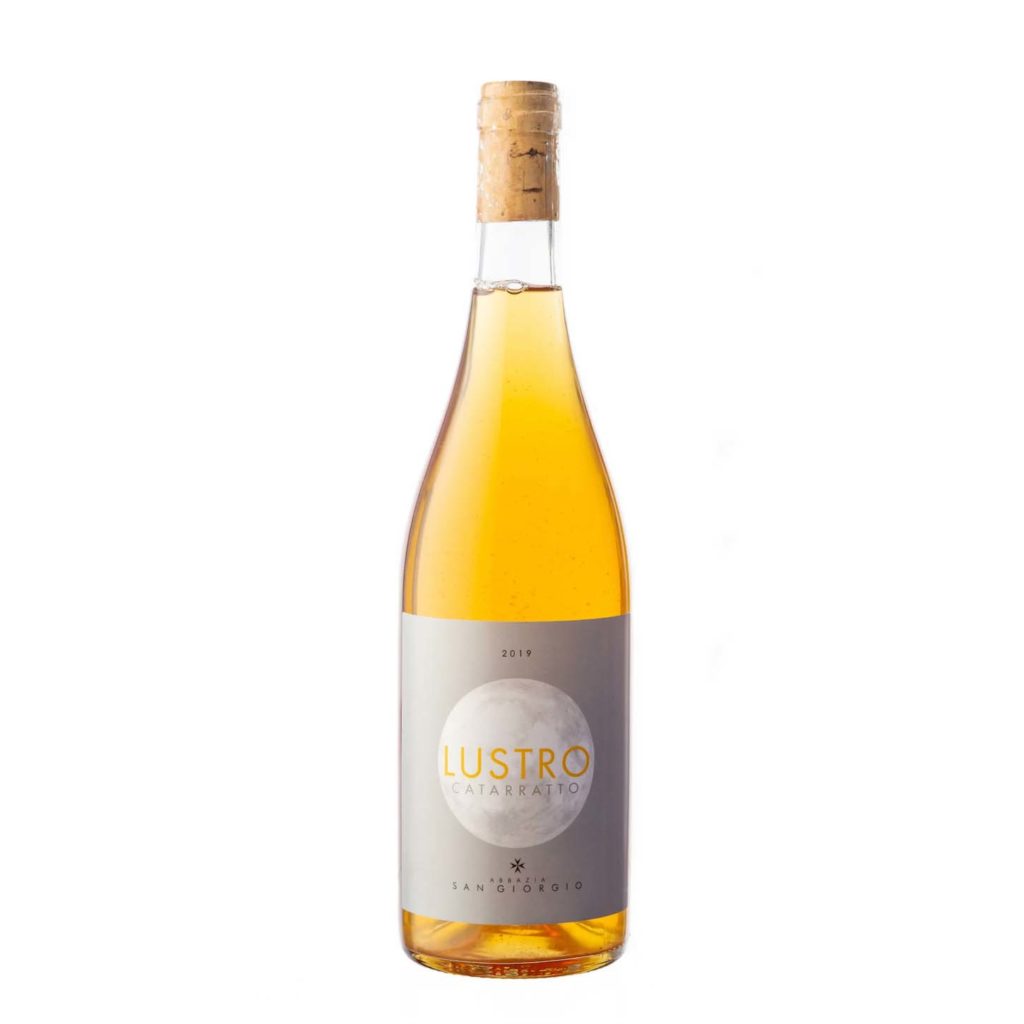
This bottle comes from a biodynamic vineyard on the Italian island of Pantelleria. With no additives of any kind, the fermentation of the grapes comes from yeasts released by the skin of the grapes to create soft tannins. It’s unfiltered which gives it a slightly cloudy appearance and makes for a great pairing with a sweet dessert like honey cake.
Free Your Body 2020
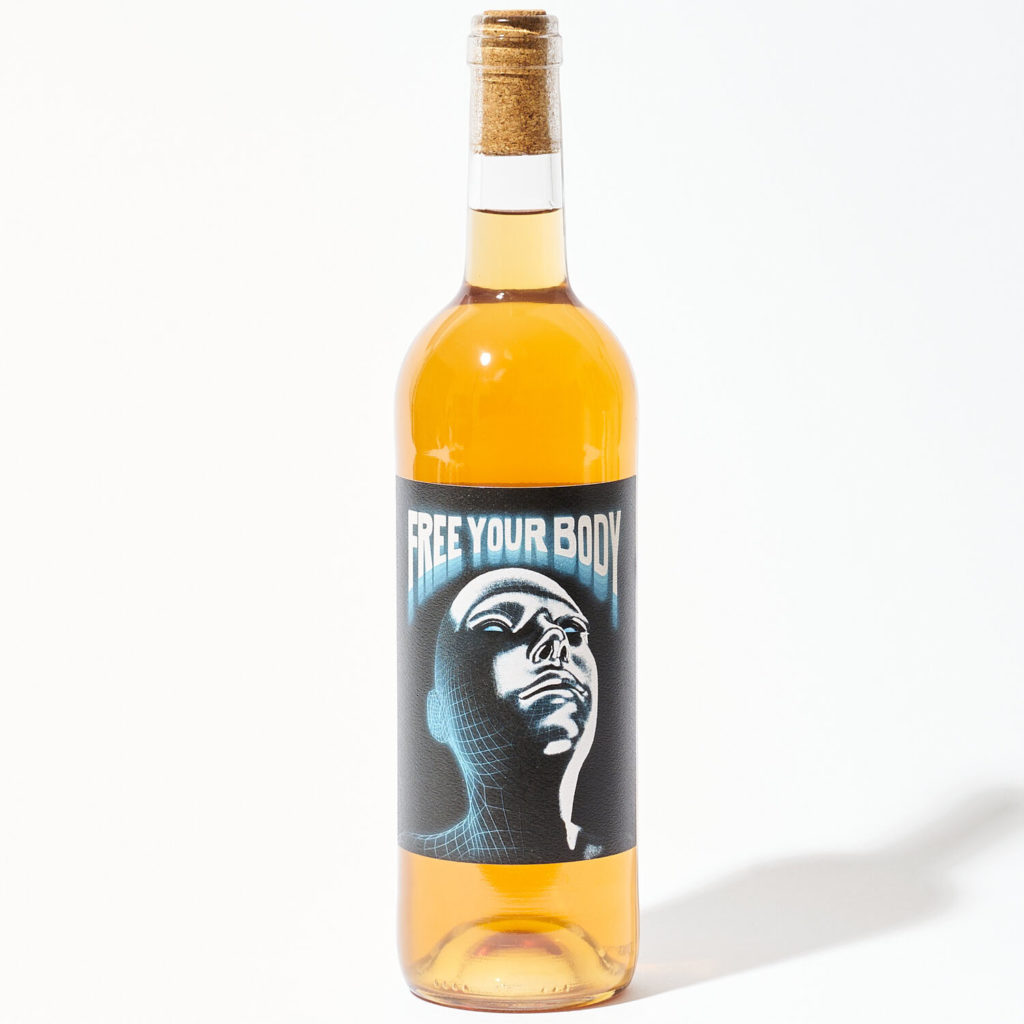
Now, we don’t base how wines taste on their labels, though many natural wines are known for avant-garde and artfully designed bottle adornments. Wonderwerk House of Fermentation serves us art on their bottles as unique and tasteful as their wines are. With one week of skin contact and no filtration using grapes harvested in Santa Barbara, California, this orange wine is left with a bright hue and fresh, tannic flavor.
